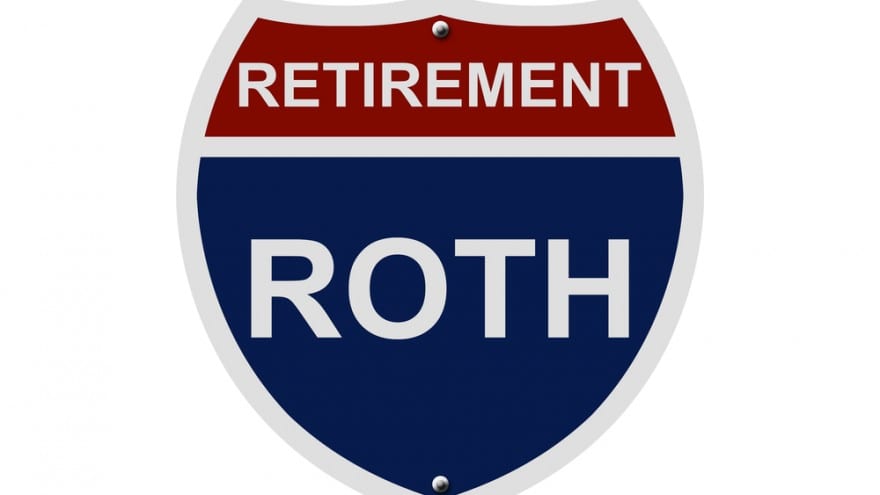A Roth IRA – Estate Planning For Your Grandchild’s Retirement

I keep scratching for estate planning traps in the new Roth IRAs. Surely Congress and the President wouldn’t create a vehicle with a genuine incentive to save and invest, I cynically think. But it is tough to find a major trap in the Roth IRA. In fact, there seem to be many attractive ways to use roth iras. In this visit, I’m going to show you why grandparents who have all they need for retirement should consider creating new Roth IRAs for future generations as one of their estate planning strategies.
The Roth IRA, as most of you know, was created in the 1997 tax law. It is a back-loaded IRA. You get no tax benefit for creating the IRA. But the Roth IRA is not taxed, and withdrawals that meet minimal requirements are free of both income taxes and the 10% early distribution penalty. No one ever pays taxes on the accumulated income and gains from the Roth IRA.
The qualifications for tax-free withdrawals are that the IRA must be at least five years old, and the contributions must made under one of the following conditions: the owner is at least age 59½, the distribution is made after the owner’s death to an estate or beneficiary, the owner is disabled, or the distribution pays for qualified first-time home owner expenses of up to $10,000. Qualified home-buyer expenses are the reasonable settlement, financing, and other closing costs for the first principal residence of the IRA owner or a child, grandchild, or ancestor of the owner or spouse.
Other Roth IRA benefits are that the owner can make contributions at any age and there are no required minimum annual distributions during the owner’s lifetime. Also, you can make full Roth IRA contributions when your adjusted gross income is $150,000 or less ($95,000 for single taxpayers). The annual contribution limit is the lesser of $2,000 per spouse or the couple’s earned income for the year, and is phased out when your gross income exceeds the limit. Earned income is income from services or self-employment, such as wages, salaries, bonuses, and consulting fees.
Here are two ways all this let you help your grandchild.
Suppose your grandchild pulls in a couple of thousand dollars a year from mowing lawns, baby-sitting, or a part-time job. Maybe the grandchild works a bit in the family business. Whatever, the grandchild’s earned income is for the year (before taxes), the grandchild is eligible to contribute that much to a Roth IRA. You can give the grandchild that amount and help him or her set up a Roth IRA with the money. The income and gains will compound tax deferred as with a regular IRA. And the grandchild will be able to withdraw the money tax free when the five-year holding period is met and the money is withdrawn for one of the qualified reasons.
There’s a little kicker in the Roth IRA rules that helps your grandchild. When distributions are nonqualified (i.e., taxable), the owner is considered to withdraw contributions first, and those are nontaxable. There are no taxes until total withdrawals exceed lifetime contributions to date. That means a grandchild who starts putting $2,000 annually into a Roth IRA after 10 years will be able to pull out enough tax free to buy a nice car and still have over $10,000 of income and gains accumulated in the Roth IRA to keep compounding for the future.
Maybe your grandchild doesn’t have any earned income. Or you already have made the maximum tax free annual gifts or don’t want to give the grandchild unfettered control of Roth IRA funds right now. In any of those cases, consider setting up your own Roth IRA and naming the grandchild as beneficiary. You’ll need earned income of at least $2,000 for the year ($4,000 if your spouse wants to do the same thing), and your adjusted gross income must be under $150,000 ($95,000 for singles).
You don’t have to take any distributions from the Roth IRA during your lifetime. The income and gains compound tax free. After your death, the grandchild inherits the IRA and must begin required annual distributions. But those distributions will be based on the grandchild’s life expectancy. So the annual distributions should be small, they will be tax free, and earnings in the IRA should be high enough to allow it to grow despite the annual distributions. Your grandchild always can take larger distributions, tax free, whenever the cash is needed. (The Roth IRA will be included in your estate after your death.)
If you want to see how a Roth IRA can grow and have internet access, several mutual fund companies have Roth IRA calculators on their web sites that will crunch the numbers for you. Take a look at www.troweprice.com, www.vanguard.com, and www.americancentury.com.
Don’t turn your attention away from the Roth IRA because your estate planning is set. The Roth IRA is a great estate planning tool for older Americans, as well as a retirement planning tool for younger generations. Take a careful look at Roth IRAs and decide how they best fit into your family financial plan.
![]()





